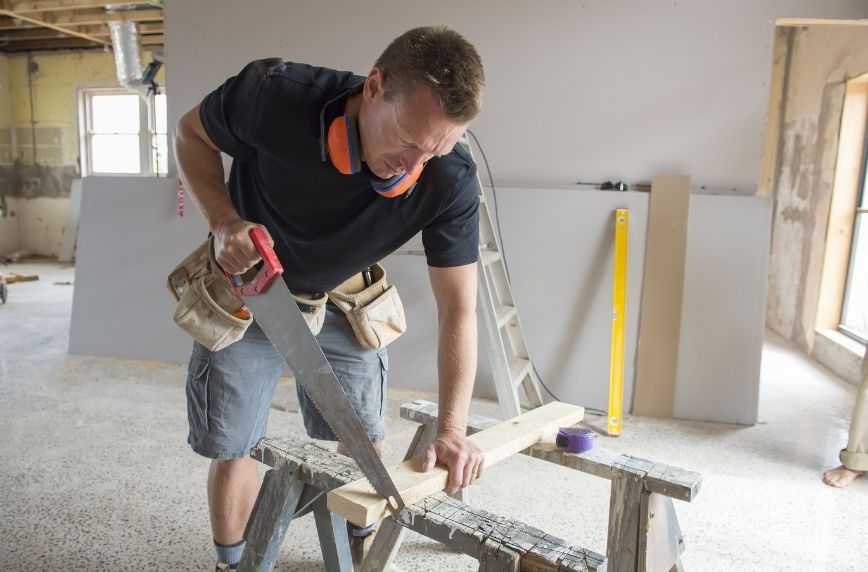There’s something satisfying about walking into a space you renovated yourself. You know exactly what went into the project and exactly how to fix any issues, and you feel a newfound sense of ownership over the space. However, safety risks are involved in any home improvement project, especially if you’re coming to the project as a DIYer. The best way to mitigate these risks is by following these safety tips for home renovation.
Wear the Right Gear
You can begin to reduce safety risks before you even start your home improvement projects by wearing the right gear. Start with your clothes. In almost any home improvement project, it’s always best to have the least amount of skin showing as possible. That means wearing long sleeves, long pants, and closed-toed shoes. Hair should be pulled back and out of the face to avoid it being caught in tools and to keep your line of vision clear. Larger projects may require additional safety precautions such as:
- Goggles
- Noise-canceling earmuffs or earplugs
- Gloves
- Kneepads
- Headgear
- Dust masks
Use the Right Tools
Using the wrong tool for a job can make any project take longer and turn out poorly. However, the issues stemming from poorly chosen tools go beyond the convenience of the job. Using the wrong tools increases the likelihood of accidents. For instance, using a wrench that’s ill-fitted for a bolt will make your hand more likely to slip, potentially causing injuries to your hand or the surrounding area. Using the wrong bit in an electric drill can cause it to break, sending shrapnel flying. Using the right tools will help your project run more smoothly.
Keep Spaces Ventilated
Home renovation safety tips shouldn’t end at avoiding physical injuries. The air you breathe often poses risks as well. Sawing, drilling, and sanding all send sawdust flying into the air. Painting also fills the space with VOCs, negatively affecting the air quality of the space. Whatever the project, it’s always good to open windows and doors and to set up a box fan to keep the air circulating. You can also reduce the harsh chemicals in the air by using non-VOC paints.
Keep Out Kids and Pets
Even if you’re fully equipped to handle the risks of a home improvement project, that doesn’t mean everyone in the household is. Young children and pets, who are prone to wander into spaces out of curiosity, are often not aware of the dangers of the area. The tools in the room can hurt them or cause you to make a mistake that might hurt you or them. Try to keep pets shut in another part of the house, and take time to explain the safety risks associated with a project to children. If they’re too young to understand, you can always have them stay with a sitter.
Are You a Professional?
Requests for your services are coming in left and right. Let’s connect and grow your business, together.


